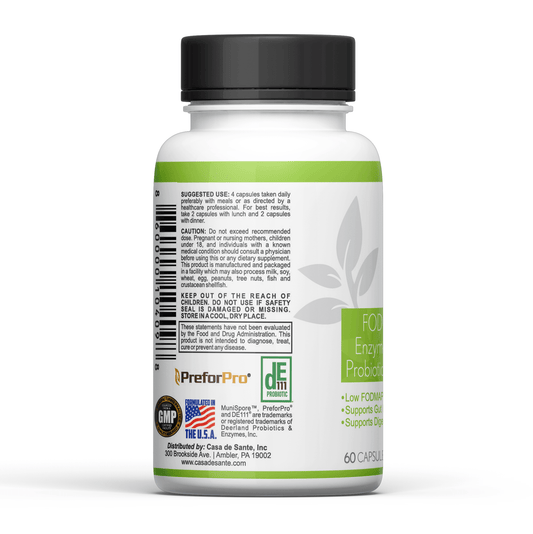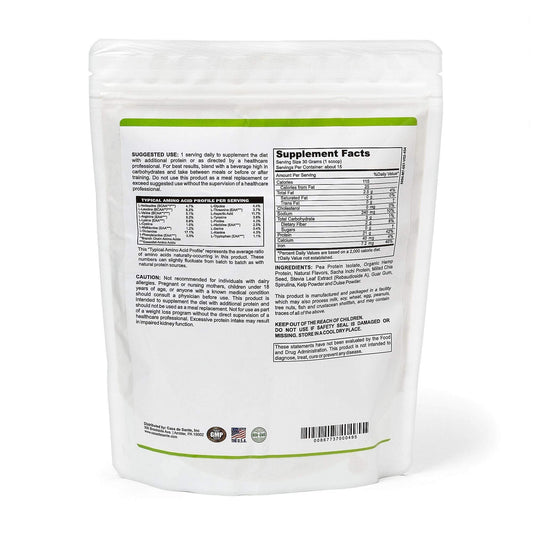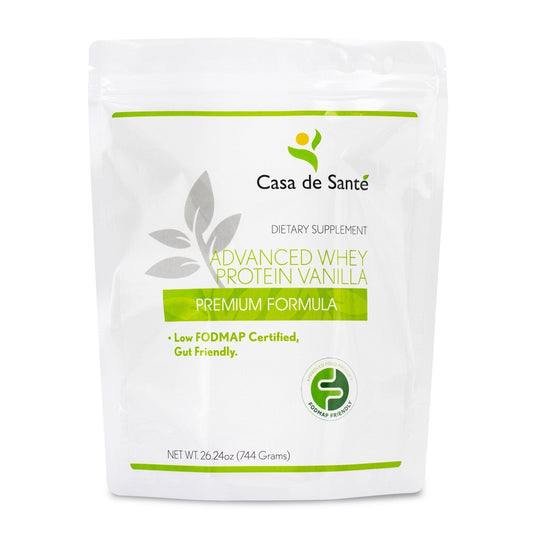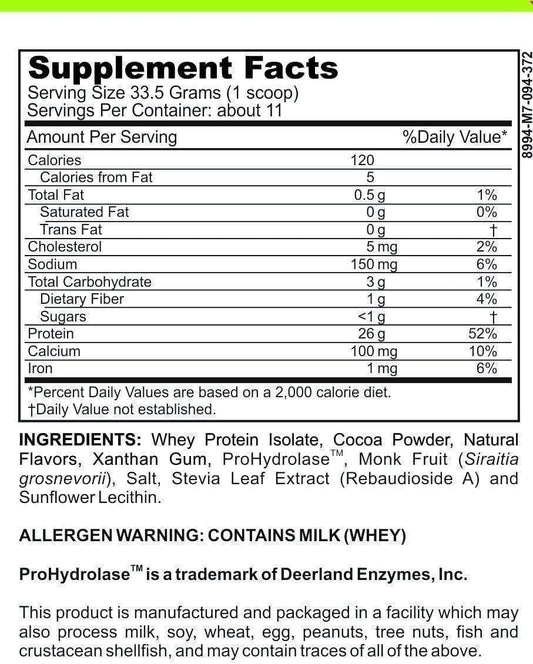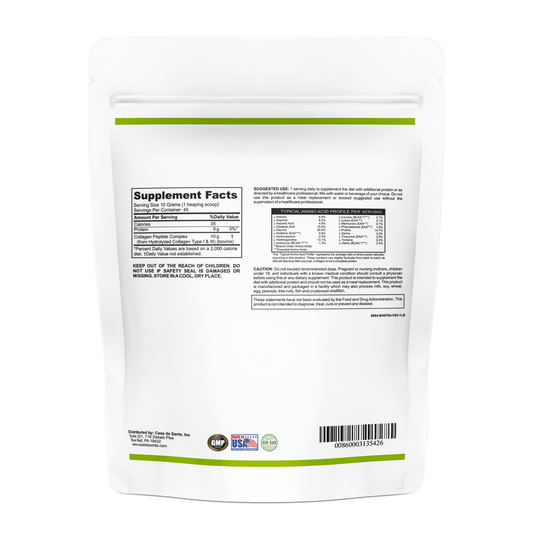Creamy Bell Pepper Risotto Recipe
If you're a fan of creamy and flavorful rice dishes, then this creamy bell pepper risotto recipe is a must-try for you! Risotto is a classic Italian dish that has gained popularity all over the world. It's known for its rich and creamy texture, which is achieved by stirring hot stock into the rice gradually. In this recipe, we'll be infusing the dish with the vibrant flavors of bell peppers, making it a delicious and colorful variation of the traditional risotto. So, let's dive in and explore the basics of risotto, the key ingredients, the step-by-step cooking process, serving suggestions, and some helpful tips for perfecting your risotto.
Understanding the Basics of Risotto
Risotto is a rice dish that originated in northern Italy, specifically in the region of Lombardy. It's made by toasting the rice in butter or oil, then gradually adding hot stock and stirring continuously until the rice is creamy and cooked al dente. This slow cooking process allows the rice to release its natural starches, resulting in a creamy texture.
Risotto is not just a dish, but a culinary tradition that has been passed down through generations. It is a labor of love, requiring patience and attention to detail. Each step in the process is crucial to achieving the perfect risotto.
The Origin of Risotto
The exact origins of risotto are unclear, but it is believed to have originated in the city of Milan. The word "risotto" comes from the Italian word "riso," meaning rice. Milan, known for its rich culinary history, embraced risotto as a staple dish and elevated it to new heights.
Legend has it that risotto was first created in the 16th century when a glassmaker's apprentice accidentally spilled saffron into a pot of rice. The resulting dish, with its vibrant yellow color and rich flavor, caught the attention of the Duke of Milan, who declared it a royal delicacy.
Over time, risotto became a symbol of Milanese cuisine and a source of pride for the city. It was served at important events and celebrations, showcasing the culinary prowess of the region.
The Key Ingredients for Risotto
Before we delve into the specifics of this bell pepper risotto recipe, let's talk about the essential ingredients for any risotto. The key ingredient, of course, is the rice. Arborio rice, a short-grain rice with a high starch content, is the most commonly used rice for risotto. Its ability to absorb liquid and release starch gives risotto its signature creamy texture.
Another popular variety of rice used in risotto is Carnaroli. Known as the "king of risotto rice," Carnaroli has a larger grain and a higher starch content than Arborio, making it ideal for absorbing flavors and creating a creamy consistency.
Vialone Nano rice, with its small and round grains, is also a favored choice for risotto. It has a delicate texture and absorbs flavors exceptionally well, resulting in a velvety and aromatic dish.
In addition to the rice, you'll need onions or shallots for aromatics, butter or olive oil for sautéing, white wine for deglazing, and hot stock for cooking the rice. The stock can be vegetable, chicken, or beef, depending on your preference and the flavor profile you want to achieve.
Parmesan cheese is another crucial ingredient, as it adds a rich and creamy flavor to the dish. The cheese is typically grated and added towards the end of cooking, melting into the risotto and enhancing its overall taste.
Lastly, don't forget to season your risotto with salt and pepper to taste. These simple yet essential ingredients bring out the flavors of the dish and elevate it to new heights.
Preparing Your Ingredients
Before you start cooking the risotto, it's essential to prepare your ingredients to ensure a smooth cooking process. Let's go over how to choose the right bell peppers, select the perfect rice, and gather the essential spices and herbs for this recipe.
Choosing the Right Bell Peppers
When it comes to bell peppers, you have a range of choices. Red, yellow, and orange bell peppers are sweeter and milder in flavor, while green bell peppers have a slightly bitter taste. For this recipe, it's best to choose bell peppers that are firm, glossy, and free from any blemishes.
Did you know that bell peppers come in different shapes and sizes? Some bell peppers are long and slender, while others are round and plump. The shape and size of the bell pepper can affect its cooking time and texture. If you prefer a more tender and delicate texture, opt for smaller bell peppers. On the other hand, if you enjoy a crunchier bite, choose larger bell peppers.
Another factor to consider when choosing bell peppers is their nutritional value. Bell peppers are rich in vitamins A and C, as well as antioxidants. The different colors of bell peppers indicate varying nutrient levels. For example, red bell peppers have higher vitamin C content compared to green bell peppers. So, not only will you be adding vibrant colors to your risotto, but you'll also be boosting its nutritional value.
Rice Selection for Risotto
As mentioned earlier, Arborio rice is the most commonly used rice for risotto due to its high starch content, which helps achieve the creamy texture. Carnaroli rice, with its slightly longer grains, is another excellent option as it retains its shape well during cooking. Whichever variety you choose, make sure it is specifically labeled for risotto.
When it comes to cooking risotto, the type of rice you use is crucial. The starch in Arborio and Carnaroli rice creates the creamy consistency that is characteristic of a well-made risotto. These rice varieties have a higher amylopectin content, which is a type of starch that gives risotto its velvety texture. The grains of Arborio and Carnaroli rice are also shorter and fatter compared to other rice varieties, allowing them to absorb more liquid and release starch during cooking.
It's worth noting that while Arborio and Carnaroli rice are the most popular choices for risotto, you can experiment with other types of rice as well. For example, Vialone Nano rice, which is commonly used in Northern Italy, offers a slightly nutty flavor and a creamy texture similar to Arborio rice. Baldo and Calriso are other lesser-known varieties that can also be used for risotto.
Essential Spices and Herbs
Apart from the bell peppers, there are a few essential spices and herbs that will enhance the flavor of your creamy bell pepper risotto. Fresh garlic cloves, dried thyme, and a pinch of red pepper flakes will add depth and warmth to the dish. Additionally, fresh basil leaves will provide a fresh and aromatic note.
Garlic is a versatile ingredient that adds a savory and slightly pungent flavor to dishes. When using garlic in risotto, it's best to finely mince the cloves to ensure they distribute evenly throughout the dish. This will allow the garlic to infuse its flavor into the rice and complement the sweetness of the bell peppers.
Thyme is a herb that pairs well with bell peppers and adds a subtle earthy flavor to the risotto. Dried thyme can be used in this recipe, but if you have access to fresh thyme, it will impart a more vibrant and aromatic taste. Remember to remove the thyme leaves from the stems before adding them to the risotto.
If you enjoy a bit of heat in your dishes, a pinch of red pepper flakes will provide a gentle kick to the creamy bell pepper risotto. The spiciness of the red pepper flakes will balance the sweetness of the bell peppers and add an extra layer of complexity to the overall flavor profile.
Lastly, fresh basil leaves will bring a burst of freshness to the risotto. Basil has a sweet and slightly peppery taste that complements the flavors of the bell peppers and adds a delightful aroma. Tear the basil leaves into smaller pieces or chiffonade them before adding them to the risotto for even distribution.
Step-by-Step Cooking Process
Now that we have our ingredients ready, let's delve into the step-by-step cooking process of this creamy bell pepper risotto recipe. Remember, the key to making a perfect risotto is patience and constant stirring!
Preparing the Bell Peppers
Start by washing the bell peppers thoroughly and removing the seeds and stems. Dice the bell peppers into small pieces of about half an inch. Set them aside for later use in the recipe.
Cooking the Risotto Rice
In a large, deep saucepan, melt some butter over medium heat. Add the diced onions and sauté until they turn translucent. Then, add the Arborio rice to the pan and toast it for a couple of minutes, stirring continuously, until the rice grains are well-coated with the butter and onions.
Next, pour in a generous splash of white wine and stir until it is absorbed by the rice. This step helps deglaze the pan and adds a delightful tang to the dish.
Now comes the slow and gradual addition of hot stock. Begin by adding a ladleful of hot stock to the pan and stir continuously until the liquid is absorbed. Repeat this process, adding more stock each time, until the rice is cooked al dente – tender but still firm to the bite. The stirring helps release the starch from the rice grains, giving the risotto its creamy texture.
Combining Ingredients for Final Touch
Once the rice is cooked to perfection, add the diced bell peppers, minced garlic, dried thyme, and a pinch of red pepper flakes to the pan. Stir everything together and let the bell peppers cook for a few minutes, until they are tender-crisp.
Finally, remove the pan from heat and gently stir in grated parmesan cheese. The cheese will melt into the risotto, further enriching its flavor and adding to the creaminess. Season with salt and pepper to taste.
Serving Suggestions for Bell Pepper Risotto
Now that your creamy bell pepper risotto is ready, it's time to enjoy it! Here are a few serving suggestions to make your meal even more delightful.
Pairing Wine with Risotto
When it comes to wine pairing, a crisp white wine such as Pinot Grigio or Sauvignon Blanc complements the flavors of the bell pepper risotto beautifully. The acidity and citrus notes in these wines cut through the richness of the dish, balancing the flavors.
Side Dishes to Complement Your Risotto
While risotto can be a complete meal on its own, you can also serve it with some additional side dishes to create a more substantial spread. A fresh green salad, roasted vegetables, or grilled chicken make excellent accompaniments, adding variety and nutritional value to your meal.
Tips for Perfecting Your Risotto
Lastly, here are some helpful tips to ensure that your creamy bell pepper risotto turns out perfect every time.
Avoiding Common Risotto Mistakes
One common mistake when cooking risotto is adding too much liquid at once. Remember to add the hot stock gradually, allowing each ladleful to be absorbed before adding more. Adding all the liquid at once will result in mushy rice instead of creamy risotto.
Another common mistake is overcooking the rice. Risotto should be cooked al dente, meaning it should have a slight bite to it. It's better to slightly undercook the rice, as it will continue to cook a bit even after you remove it from heat.
Enhancing the Flavor of Your Risotto
To enhance the flavor of your creamy bell pepper risotto, you can experiment with different additions. For a more indulgent dish, you can stir in some cooked crumbled bacon or sautéed mushrooms along with the bell peppers. Adding a squeeze of fresh lemon juice at the end can also brighten the flavors.
In conclusion, this creamy bell pepper risotto recipe is a delightful twist on the classic Italian dish. With its creamy texture and vibrant flavors, it is sure to become a favorite comfort food in your home. So, gather your ingredients, follow the step-by-step instructions, and savor the deliciousness of this creamy bell pepper risotto!


